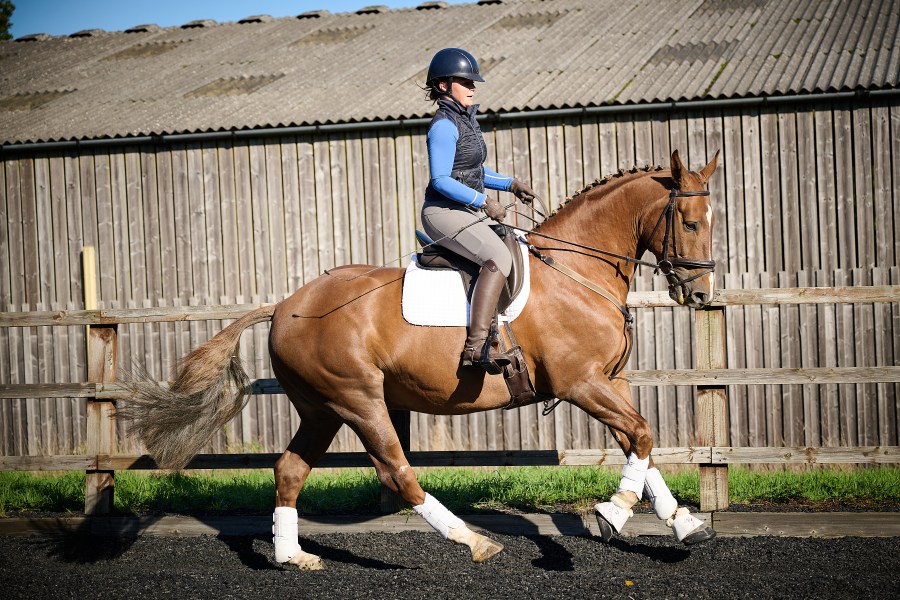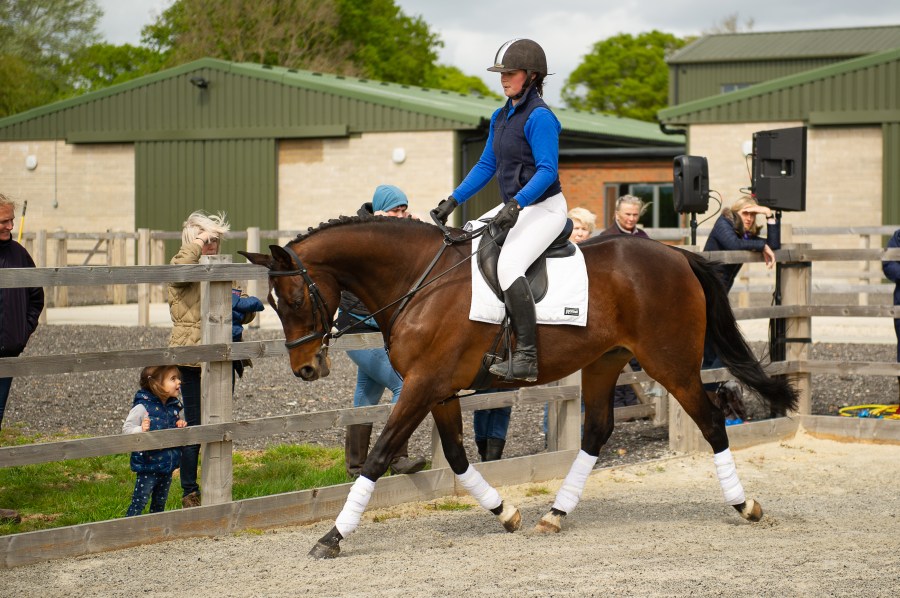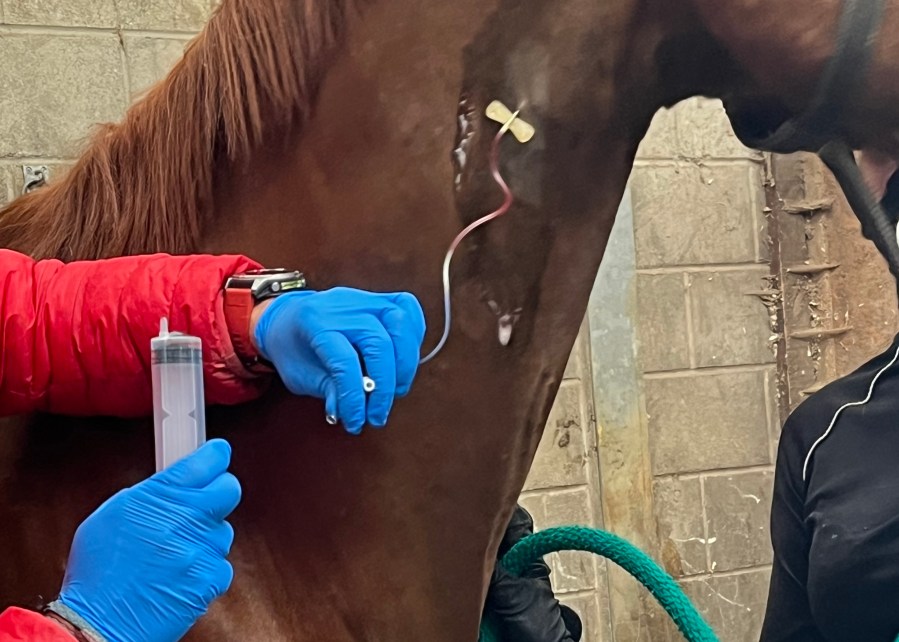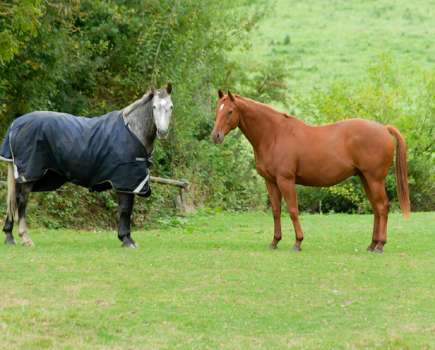An equine rehabilitation centre in West Sussex is full of praise for a pioneering new treatment which helps to alleviate complex equine musculoskeletal and arthritis issues.
Over the past two years, Moorcroft Equine Rehabilitation Centre near Horsham has been working with research firm Advanced Biologics Research Ltd to refine Platelet Rich Plasma (PRP) approaches and offer a viable alternative to traditional treatments like steroids and invasive surgery.
PRP is a regenerative medicine treatment that delivers a high concentrate of platelets in the form of blood plasma to a lesion increasing the amount of growth factors at the site to help with healing.
The study reveals a strong correlation between platelet concentration and the ability to stimulate wound healing and tissue regeneration for a range of conditions including chronic arthritis, kissing spines, facet joint pain, and tendon and ligament injuries.
Highly effective
The treatment has been used on 80 horses at Moorcroft with no adverse effects or clinical complications. The treatment significantly reduced pain within 24 – 72 hours and over 83% of treated horses showed considerable clinical improvement.
“Regenerative medicine like PRP is one of the most exciting therapies introduced to the equine industry in recent years. We are thrilled to collaborate with Advanced Biologics Research to further develop PRP treatment,” said Mary Frances, chief executive of Moorcroft.
“The results after two years are very encouraging. We see hundreds of horses annually, many struggling with osteoarthritis, ligament and tendon injuries, or wounds that have failed to heal properly. Our specially formulated dose, produced on-site, is showing remarkable success in these areas.”
“These results are particularly promising for overweight Cob horses and ponies, where traditional treatments like steroids can sometimes lead to laminitis.”
The study showed a strong positive correlation between platelet concentration and treatment effectiveness and the best outcome occurred when the PRP treatment was combined with an exercise regime.
Magic touch
Wizard, a four-year-old Irish Sports Horse who was suffering from bone chips in his right hock and showed pain and lameness when in work, was one of the horses to partake in the case study. He underwent surgery to alleviate the issue and was administered with steroids but neither left him sound and able to be worked or ridden.
“We found Moorcroft and Advanced Biologics Research and decided to embark on the natural treatment of Platelet Rich Plasma in the hope that it would succeed in achieving a pain-free horse that could fulfil his potential and give him a better life,” said his owner Lianne Bird.
“We were overjoyed to see that the horse became sound very quickly and was able to enjoy safe sound hacking and gentle schooling. Over the next year we were able to strengthen all three paces, build on the work and in time ask a bit more.
“We could not be more pleased with the healthy result we achieved with PRP.”
As Wizard was still growing, the treatment was repeated after six months and further improvement occurred. He has now started to develop good quality muscle as well as develop in confidence.

“We aim to raise awareness about this new treatment so more horses can benefit from this non-invasive, life-changing therapy with long-lasting and sustainable benefits. We also offer the opportunity for people to bring their horses for treatment with our in-house veterinary team,” said Mary.
How PRP works
Platelet-rich plasma works by taking blood from a horse and passing it through a filter or a special machine which separates the majority of the red and white blood cells from the platelets or plasma to leave a platelet-rich plasma. This PRP sample is then injected back into the horse around 15-30 minutes after it was taken.
The treatment takes place at Moorcroft on the same day to ensure the product used is as fresh as possible. PRP does not travel well, so being made and administered at the same site is highly beneficial in terms of efficacy.
“I’ve treated many horses with this PRP treatment and have seen them experience significant reductions in pain, as well as improvements in their mobility and overall quality of life. This is particularly the case when combined with a dedicated exercise regime,” said Vasco Lopes, veterinary surgeon at Equine Veterinary Performance Limited, who administers the PRP treatment at Moorcroft.
“PRP treatment is well researched in the treatment of osteo-arthritis and tendon and ligament injuries in horses. This treatment appears to be offering horses long-lasting respite from the pain and immobility of musculoskeletal issues. This is extremely exciting and offering much hope and optimism for the management of these conditions now and in the future.”
Quick pain relief
Monksgold was another horse to benefit from the study. The 12-year-old ex-racehorse was diagnosed with Facet Joint arthritis in his thoracic and lumbar vertebrae which was causing him considerable pain. He was given steroids but they only provided him with temporary pain relief so he was referred to Moorcroft for PRP and showed noticeable improvements after his initial treatment.

“[PRP treatment] has amazed us all at how speedily it allows the pain to subside allowing the horse to breathe, work more comfortably and start to develop good quality muscle in that area. Prior to treatment because of pain, muscles will atrophy quickly further
damaging the horse and causing discomfort,” said Mary.
Moorcroft Equine Rehabilitation Centre will host a ‘Demonstration Day’ on Saturday 12 April which features a dedicated presentation on its PRP treatment, followed by an expert Q&A session. For more information click here.
Images © Moorcroft Equine Rehabilitation Centre.









